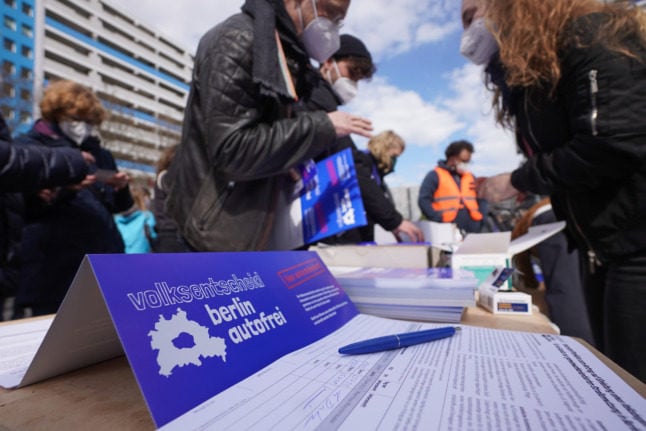Officially launched last October, the car-free initiative has the 20,000 valid signatures it needs to take it forward to the next step of a referendum procedure, newspaper Tagesspiegel reported on Friday.
It submitted more than 50,000 signatures at the beginning of August, of which the Senate of Berlin recognised 27,000 as valid. However, more than a fifth of the signatures were not checked because the quorum had already been reached.
The Senate now has five months to examine the initiative’s legislative proposal, The Berlin Law For Road Use Based On The Common Good (‘Berliner Gesetz für gemeinwohlorientierte Straßennutzung’). Provided there are no legal concerns, it will then forward the draft with a political recommendation to the House of Representatives (‘das Abgeordnetenhaus’), Berlin’s state parliament.
If the bill is rejected at this point, then the initiative plans to move to the referendum, for which they’ll need 175,000 signatures, the paper said.
If they’re successful in collecting that many, then all eligible Berliners could vote on the law in 2023.
“We are now eagerly awaiting the election. It is used to decide whether the turning point for traffic in Berlin will continue to progress so slowly or whether it will pick up speed. We want to convince the new House of Representatives of our car-free law,” said Nina Noblé, spokeswoman for the initiative.
If it’s passed, the law would significantly restrict traffic within Berlin’s S-Bahn ring. All streets, except federal highways, within that area would become car-reduced streets with use limited to walking, cycling and public transport, the group explained.
While necessary car journeys would still be permitted, the initiative wants to see the number of private journeys limited to 12 per year initially.
However, exceptions would be made for tradespeople and those with restricted mobility and, of course, emergency and public services.
This is not the first time that the city’s seen car-free schemes either.
Last year, a section of one of the capital’s busiest streets, Friedrichstraße, in the Mitte district, was closed to traffic from June to November to find out what effects this would have on pedestrian, bicycle, car and delivery traffic in the area.
READ ALSO: Part of central Berlin set to be closed to traffic for six months
The pilot project was then extended as the pandemic had made it difficult to make comparisons and would now end in October 2021, Tagesspiegel reported previously.
In 2018 Friedrichstraße was closed to traffic for several hours in December and traffic was stopped at the nearby Brandenburg Gate in 2002, while plans were announced in 2017 to restrict traffic on Unter Den Linden from 2019. Hamburg has also considered making areas of the city car free in the not-too-distant future.
The Berliner Morgenpost reported previously that the Berlin Senate had recommended banning vehicle traffic around the Checkpoint Charlie section of Friedrichstraße – only a few hundred metres south – for safety reasons.



 Please whitelist us to continue reading.
Please whitelist us to continue reading.
Member comments